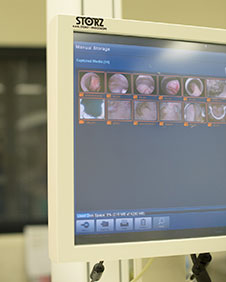DR S PERCY MOODLEY
Estrogen containing menopausal hormone therapy is the most effective treatment for menopausal symptoms in healthy women, but is contraindicated for some women and avoided by many others.
The biochemical hall mark of the climacteric is a sudden decline in estrogen levels. The latter leads to 3 broad classes of symptoms:
- vasomotor symptoms,
- insomnia, changes in memory, concentration and mood,
- urogenital symptoms.
Clinical studies have demonstrated a 30 to 50 % placebo effect with interventions for reduction of hot flushes. Therefore, if a treatment is to be considered effective, it has to be substantially better than placebo.
Behaviour modification, for example keeping the environment cool and dressing in layered clothing, may offer help for mild symptoms. Other non-pharmaceutical interventions include Acupuncture, which is superior to placebo but less effective than estrogen, and paced respiration and relaxation techniques for 20 minutes per day, which have been shown to offer benefit but adequate training is central to efficacy.
Pharmaceutical options include clonidine, venlafaxine, paroxetine, and gabapentin.
Clonidine, a centrally acting adrenergic stimulating agent, in a dosage of 50 to 150 micrograms twice daily, may act by elevating the flush threshold. In general, most women do not find clonidine useful.
Venlafaxine , a serotonergic noradrenergic reuptake inhibitor, and paroxetine, a selective serotonergic inhibitor, demonstrate a moderate reduction in hot flushes. These drugs work best in patients with accompanying mood changes, but the anti-depressant effect only becomes evident after 6 to 8 weeks. Paroxetine should not be used in combination with tamoxifen as it may impair its efficacy in breast cancer prevention.
Gabapentin, in a dose of 300 to 900 milligrams at night, has been shown to be effective in reducing the frequency and severity of hot flushes. Sedation can be a significant side effect.
Phytoestrogens refer to plant constituents with a molecular structure similar to estrogens. Most studies do not demonstrate an effect superior to placebo. The effect of phytoestrogens on the breast remain unclear.
A recent review of black cohosh for menopausal symptoms did not demonstrate greater efficacy than placebo. There have been reports of hepatic reactions to black cohosh and of 2 cases of liver failure requiring transplant.
Topical estrogen is effective in alleviating vaginal dryness and atrophy. It is safe for women who retain their uterus or when systemic hormone therapy is contraindicated since systemic absorption is minimal in recommended doses. Vaginal lubricants can be added, especially if superficial dyspareunia is significant.
There is no evidence that dietary supplements sold as over the counter remedies confer benefit other than that due to a placebo effect.
The skill of the menopausal practioner is to individualise management.
REFERENCES:
NON HORMONAL TREATMENTS FOR MENOPAUSAL SYMPTOMS – Martha Hickey et al: Maturitas 57 (2007); 85-89
NONPHARMOLOGICAL TREATMENT OF POSTMENOPAUSAL SYMPTOMS – Iris L Tong. TOG (CPD JOURNAL from RCOG); vol 15, 1, (2013),10-25
